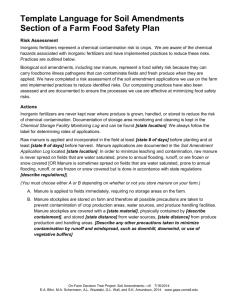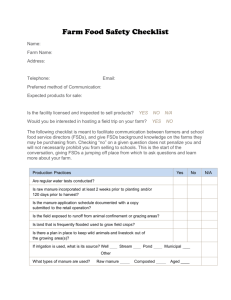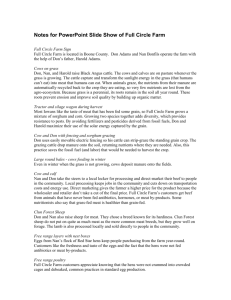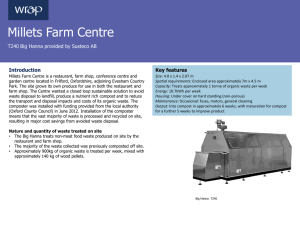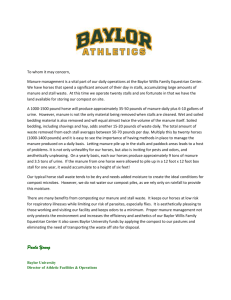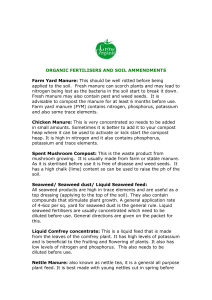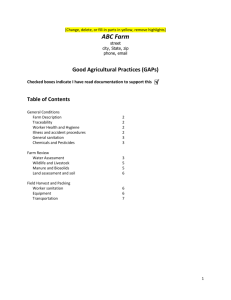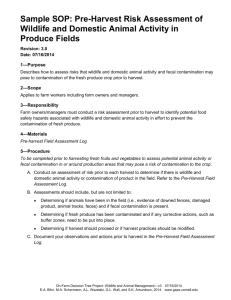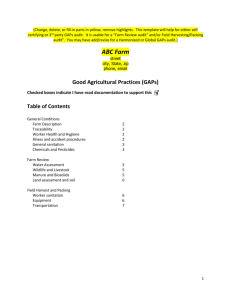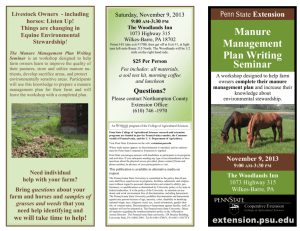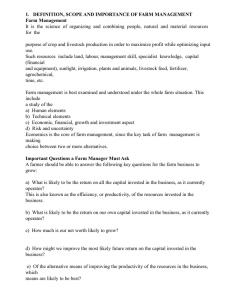Template Language
advertisement
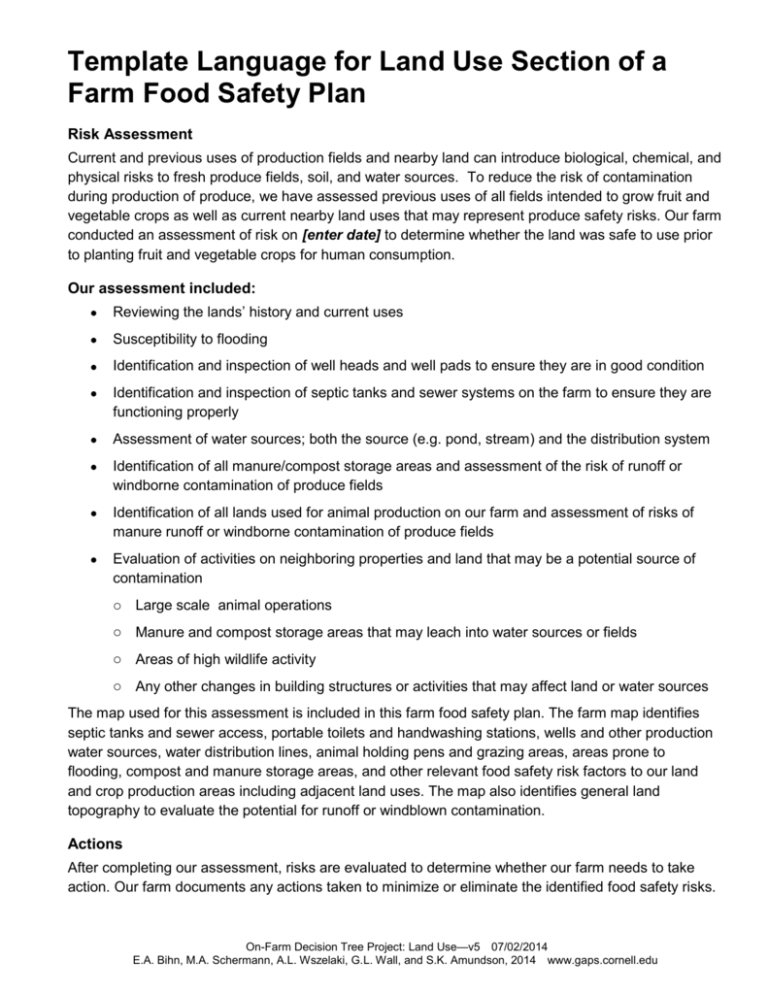
Template Language for Land Use Section of a Farm Food Safety Plan Risk Assessment Current and previous uses of production fields and nearby land can introduce biological, chemical, and physical risks to fresh produce fields, soil, and water sources. To reduce the risk of contamination during production of produce, we have assessed previous uses of all fields intended to grow fruit and vegetable crops as well as current nearby land uses that may represent produce safety risks. Our farm conducted an assessment of risk on [enter date] to determine whether the land was safe to use prior to planting fruit and vegetable crops for human consumption. Our assessment included: Reviewing the lands’ history and current uses Susceptibility to flooding Identification and inspection of well heads and well pads to ensure they are in good condition Identification and inspection of septic tanks and sewer systems on the farm to ensure they are functioning properly Assessment of water sources; both the source (e.g. pond, stream) and the distribution system Identification of all manure/compost storage areas and assessment of the risk of runoff or windborne contamination of produce fields Identification of all lands used for animal production on our farm and assessment of risks of manure runoff or windborne contamination of produce fields Evaluation of activities on neighboring properties and land that may be a potential source of contamination o Large scale animal operations o Manure and compost storage areas that may leach into water sources or fields o Areas of high wildlife activity o Any other changes in building structures or activities that may affect land or water sources The map used for this assessment is included in this farm food safety plan. The farm map identifies septic tanks and sewer access, portable toilets and handwashing stations, wells and other production water sources, water distribution lines, animal holding pens and grazing areas, areas prone to flooding, compost and manure storage areas, and other relevant food safety risk factors to our land and crop production areas including adjacent land uses. The map also identifies general land topography to evaluate the potential for runoff or windblown contamination. Actions After completing our assessment, risks are evaluated to determine whether our farm needs to take action. Our farm documents any actions taken to minimize or eliminate the identified food safety risks. On-Farm Decision Tree Project: Land Use—v5 07/02/2014 E.A. Bihn, M.A. Schermann, A.L. Wszelaki, G.L. Wall, and S.K. Amundson, 2014 www.gaps.cornell.edu Examples include: Talking to neighboring land owners about mitigating a risk on their land that may affect our land, water sources, or crops. Avoiding planting produce crops in specific locations that have been identified as having food safety hazards such as areas that are prone to flooding, fields that are contaminated with pathogens or chemicals (if identified), or areas that have been used as prior waste or industrial sites. Testing soil and water sources to determine the level of risk that is present and keeping these tests on file for at least 2 years. Installing barriers to prevent runoff from compost and manure storage areas or animal grazing and holding pens. Establishing buffer distances between produce growing and handling areas as well as compost and manure storage, animal grazing and holding pens, septic leach fields and tanks, or other food safety risks present on the land. Developing a co-management approach to minimizing risks from wildlife, while keeping environmental conservation in mind. The assessment of risk is reviewed each year or whenever relevant changes to farming practices, land use, or conditions occur. On-Farm Decision Tree Project: Land Use—v5 07/02/2014 E.A. Bihn, M.A. Schermann, A.L. Wszelaki, G.L. Wall, and S.K. Amundson, 2014 www.gaps.cornell.edu
